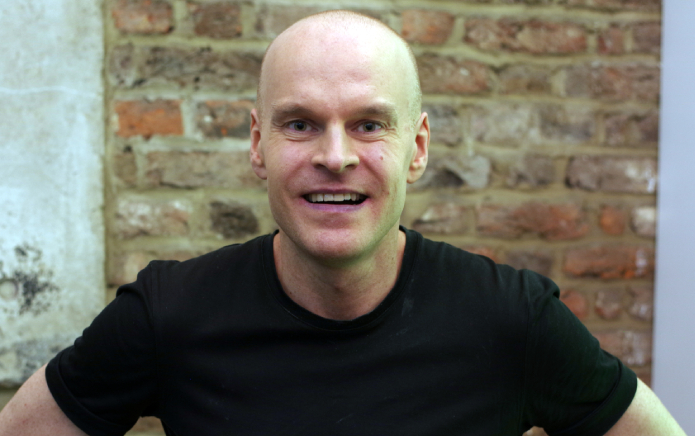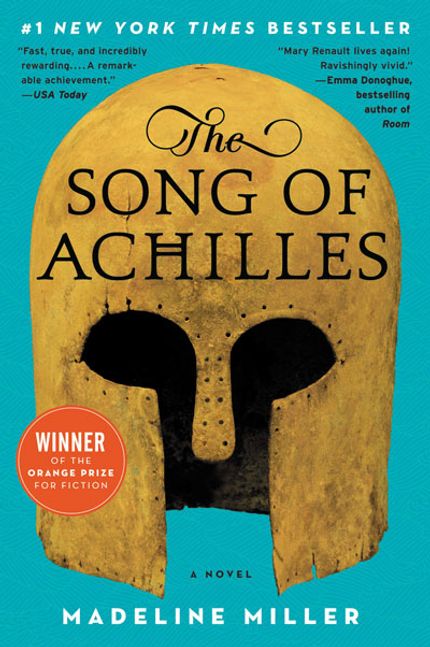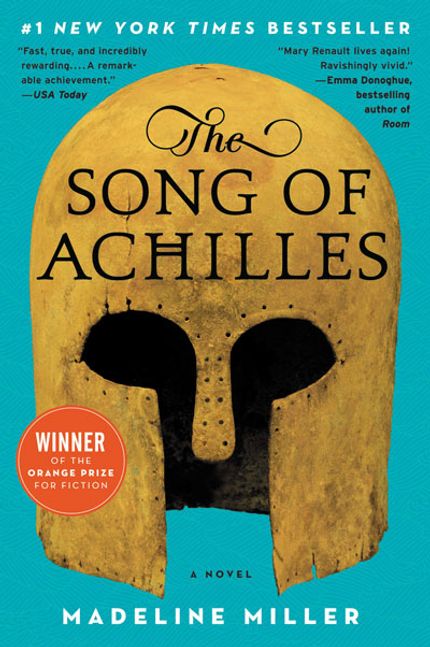
Ethan and Aiden Dvash-Banks are twin brothers—born just four minutes apart on the same September day in the same hospital room in Ontario, Canada. But shortly after their birth in 2016, the U.S. State Department decided that the two boys were very different in the eyes of American law: Aiden was a U.S. citizen but Ethan, the brother with whom he’d shared a womb, was not.
The reasoning, as it were, came down to how the boys had been conceived, via technology that a half-century-old immigration law could have in no way anticipated. The boys’ fathers, Andrew and Elad Dvash-Banks, used eggs from an anonymous donor, a gestational surrogate, and their own sperm. Aiden was genetically related to Andrew and Ethan to Elad, but each considered himself a father, in equal measure, to both boys. American officials didn’t see it that way, though: What mattered to them was that Andrew is an American citizen, which allowed him to pass his citizenship to his genetic son. But Elad is Israeli, so his genetic son was denied U.S. citizenship.
The Dvash-Bankses learned all of this just weeks before a planned move back to the United States when the boys were infants. (The couple had met in Israel and gotten married in Canada, in 2010, when gay marriage was not yet legal in the U.S.) They felt blindsided. “These are twin boys born four minutes apart,” Andrew Dvash-Banks reiterated to me on a recent phone call. “I can’t have my twins be treated differently.” But the U.S. sets policies that confer citizenship on some people but not others, which means hard lines have to be drawn somewhere. In this case, the line landed right in the middle of a new family.
In May, the State Department finally updated its policy to prevent these scenarios involving assisted reproductive technology. Children born abroad to married parents of whom only one is a U.S. citizen no longer need a biological link to the American parent specifically—as long as at least one parent in the marriage is genetically related to or gave birth to the child. “It was such a relief,” Dvash-Banks said of the policy change. “Knowing that we can finally put this to rest was just such a great feeling, and more than that, knowing that no other family needs to go through what we went through.” The Dvash-Bankses had won a lawsuit that granted U.S. citizenship to Ethan in 2019, but the State Department policy remained in place for other families until May.
No official number exists for how many children were affected by the policy change. Aaron Morris, the executive director of the LGBTQ nonprofit Immigration Equality, which helped file the Dvash-Bankses’ lawsuit, estimates that it’s in the hundreds. The number is small because it applies only in specific cases where parents used assisted reproductive technology to have children abroad. The Dvash-Bankses were already living overseas, but in other cases, prospective parents have gone abroad to countries such as Mexico and Ukraine for the express purpose of finding a gestational surrogate, as the practice is still illegal in some states and very expensive even where legal. The U.S. embassy in Mexico has even warned American parents going through surrogacy there to prepare for “long and unexpected delays in documenting your child’s citizenship.”
Citizenship and parentage have long been intertwined, but that relationship historically relied on a simple definition of a parent. When a child can have up to five possible parents—a gestational surrogate, a sperm donor, an egg donor, and two intended parents—whose citizenship counts? The question has come up repeatedly in recent years precisely because making a baby, making even a single baby, can be a global enterprise.
The 1952 law that allows American parents to transmit their citizenship to children born abroad does not mention gestational parents, genetic parents, or intended parents—concepts that had not yet been disaggregated by new technology. “All of those things tended to be assumed to be a package,” says Scott Titshaw, a former immigration lawyer and a law professor at Mercer University. A person was simply a “parent.” Since then, however, sperm donation, egg donation, surrogacy, and in vitro fertilization have made it possible to conceive children with whom one or two parents have no biological link. But the State Department’s interpretation of the law—if not the actual text of the law—continued to require a genetic link between the parent who was a U.S. citizen and the child.
Titshaw wrote about the pitfalls of that interpretation in a 2010 law-review article memorably titled “Sorry, Ma’am, Your Baby Is an Alien: Outdated Immigration Rules and Assisted Reproductive Technology.” He had started hearing about such cases when practicing as an immigration lawyer. To him, the issue was linked to gay rights. Same-sex couples are more likely than heterosexual couples to use assisted reproductive technology to have children who do not have a biological link to at least one parent. Moreover, a heterosexual couple who shows up to a U.S. consulate with a baby and a birth certificate listing both of their names is simply less likely to be questioned about their baby’s origins.
Morris at Immigration Equality told me the issue came to a head after 2013, when the Supreme Court overturned the section of the Defense of Marriage Act that outlawed federal recognition of same-sex marriage. “Families who believed that they had the same rights as everyone else,” he said, “were horribly disappointed when they would go to register their kids as citizens.” After much bureaucratic negotiation, advocates persuaded the Obama administration in 2014 to slightly broaden the interpretation of the 1952 statute to include gestational parents too. An American mother who carried her baby but used a donated egg could now pass on her citizenship. But the rules still didn’t cover cases like the Dvash-Bankses’. Toward the end of the Obama administration, Morris said, advocates started talking with Hillary Clinton’s campaign. Then, of course, Donald Trump was elected president, and U.S. immigration policy took a hard, restrictive turn instead.
In 2017, the Dvash-Bankses moved back to the U.S. with Aiden’s American passport and Ethan on a tourist visa, which he overstayed. Technically, baby Ethan had become an undocumented immigrant. This was an incredibly stressful time for the family, especially as Trump’s anti-immigration rhetoric and policies dominated the news. They worked with Immigration Equality to file a lawsuit in 2018.
Families in this situation are able to get their children green cards for permanent residency, but that process is also strange. Allison Blixt and Stefania Zaccari were married in the U.K. and when they returned to the U.S. in 2019, Blixt applied for a green card for their son Lucas. (Zaccari, who is Italian, had given birth to him. Blixt, who is American, gave birth to their younger son, Massi, who got an American passport easily.) Blixt couldn’t list herself as Lucas’s mother on the form—which she and Zaccari found ridiculous and insulting. “The way it was treating me was like I’m his stepparent,” Blixt told me, “and I was unwilling to tick that box.” Lucas did get his green card, but Blixt and Zaccari also ended up filing a lawsuit with the help of Immigration Equality for his citizenship.
Kelsey Allen, an immigration lawyer in Minnesota who has worked on similar cases involving surrogacy in Mexico, told me that former clients of hers, a heterosexual couple, went for the residency route for their baby last year because it felt “the safest.” She told them that although their baby’s American citizenship might be denied, they could prevail in court like the Dvash-Bankses. But that would be a lengthy process. “There wasn’t a perfect option, which is really frustrating,” she said. “The family really cared about getting the baby a Social Security number and getting her on the insurance. That was the fastest way to do it.” (A Social Security number isn’t strictly necessary for insurance, Allen clarifies, but the family was running into problems without one for their baby.)
Blixt and Zaccari’s lawsuit was pending in a New Jersey district court when the State Department announced its new interpretation of immigration law in a press release on May 18. The government’s lawyers had filed a series of extensions in the case earlier this year, which Morris said in retrospect was a sign of an impending policy change under the new Biden administration. (The State Department declined to comment on the political timing of the change.) For Blixt and Zaccari, it doesn’t quite feel real yet. They are still waiting to hold Lucas’s American passport in their hands. For now, Zaccari told me, “We don’t have anything that proves [his citizenship] except a press release from the State Department.”
They realize how lucky they are, too. The new policy still covers only children of married parents. Blixt and Zaccari got married in the U.K. in January 2015, not long after same-sex marriage became legal there. Lucas was born just three weeks later. If they had waited longer to wed—or if they had been living in a country that did not allow same-sex marriage—Lucas would still not be an American citizen, even under the new policy. The lines drawn around American citizenship have shifted slightly, but they are still hard lines.








